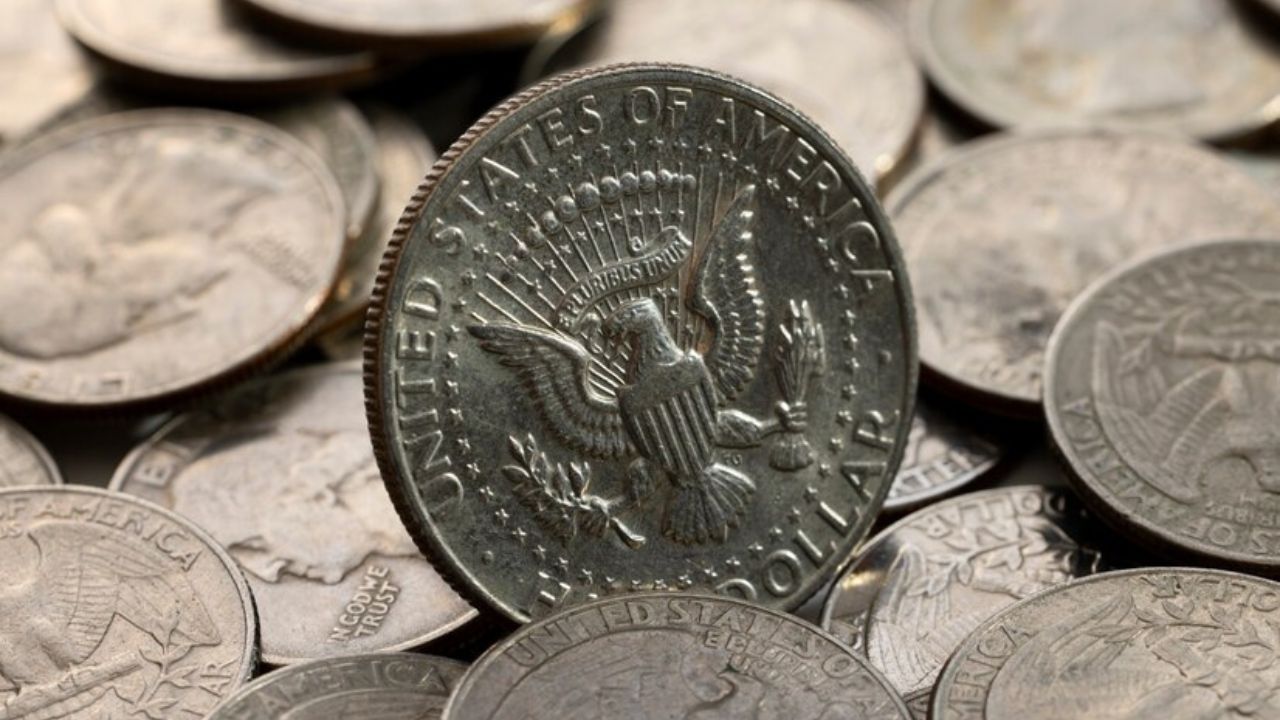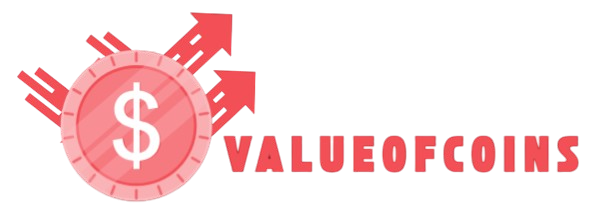BLOG
1983 Quarter Value: are “P”, “D”, “S” worth money?

Have 1983 quarters always fascinated you? Are you considering collecting these coins? If so, we wrote this article for you. In it, we are going to discuss the 1983 quarter value, its history, key features, varieties, and errors.
1983 Quarter Details
1983 Quarter Details

- Category: Washington Quarters
- Total Mintage: 1,294,620,570
- Minting place: Philadelphia, Denver, San Francisco
- Weight: 5.67 g
- Diameter: 24.3 mm
- Edge: Reeded
- Face value: 25 cents ($0.25)
- Composition: 8.33% nickel and 91.67% copper
- Engraver: John Flanagan
The 1983 Quarter’s Obverse Design
This coin’s obverse features an image of George Washington facing left. Under his chin, the words, “IN GOD WE TRUST” are written. Above his head, along the coin’s top rim, the word “LIBERTY” is written.
This inscription starts from the left of Washington’s forehead to the back of his head. Along the coin’s bottom rim, just below where Washington’s neck cuts off, the date 1983 is engraved. This entire design was the work of a sculptor called John Flanagan.
The 1983 Quarter’s Reverse Design
The most noticeable feature of the 1983 quarter’s reverse side is the image of an eagle with outstretched wings; this is at the design’s center. This eagle is standing on a bundle of arrows that are arranged with sharp tips on the right.
Below this bundle is a wreath made of olive branches. This wreath extends to the sides of the perch. Also, it’s just above a legend with the writing “QUARTER DOLLAR” along the bottom rim of the coin.
There’s also a legend along the top rim of the coin that says “UNITED STATES OF AMERICA”.
This starts on the side of the eagle’s left wing and ends on the side of its right wing. Beneath this legend and just over the eagle’s head, the coin has the words “E PLURIBUS UNUM”.
The 1983 Quarter’s Other Features
The 1983 quarter has a reeded edge and a diameter of 24.3 mm. More importantly, it has a composition of 91.67% copper and 8.33% nickel.
This was achieved by applying a layer of 75% copper and 25% nickel over a pure copper center. This gives the resulting coin a mass of 5.67 grams.
1983 Quarter Value Chart
| 1983 Quarter Value Chart | |||
| Condition | 1983 P Quarter | 1983 D Quarter | 1983 S Quarter |
| XF45 | $0.25 | $0.25 | N/A |
| MS63 | $14 | $10 | N/A |
| MS65 | $46 | $38 | N/A |
| MS67 | $600 | $1,300 | N/A |
| PR64 | N/A | N/A | $5 |
| PR67 | N/A | N/A | $6 |
| PR69 | N/A | N/A | $16 |
| PR70 | N/A | N/A | $37 to $80 |
1983 Quarter Value and Varieties Guide
1983 P Quarter

- Type: Washington Quarters
- Mint Mark: P
- Minting place: Philadelphia
- Year: 1983
- Edge: Reeded
- Mintage: 673,535,000
- Designer: John Flanagan
- Face value: 25 cents ($0.25)
- Current value: $0.25 to $600
- %Composition: 8.33% nickel and 91.67% copper
- Mass: 5.67 g
- Diameter: 24.3 mm
In 1983, the Philadelphia mint produced 673,535,000 quarters. Each of these had a “P” mint mark on the obverse side, behind Washington’s neck, just after the ribbon in his hair. This is one of the first coin types to bear the Philadelphia mint mark.
Since this mint facility was the only one in the country for years, it didn’t originally see the point of using a mint mark. However, with the opening of the Denver and San Francisco facilities, the Philadelphia one decided to start using a mint mark.
It first used a “P” mint mark in the nickels minted from 1942 to 1945. However, it never did this again until it produced the 1979 dollars with this mark. And from 1980, they decided to put a mint mark on all their coins going forward except cents.
So this mark didn’t even make the 1983 quarters special or scarce. Many of them are still available today because of their high mintage. As such, you can get a low-grade version for as little as 25 cents.
However, an MS67 can go for around $600. Some even go for above $2,500.
1983 D Quarter

- Type: Washington Quarters
- Mint Mark: D
- Minting place: Denver
- Year: 1983
- Edge: Reeded
- Mintage: 617,806,446
- Designer: John Flanagan
- Face value: 25 cents ($0.25)
- Current value: $0.25 to $1,300
- %Composition: 8.33% nickel and 91.67% copper
- Mass: 5.67 g
- Diameter: 24.3 mm
In 1983, the Denver mint produced 617,806,446 quarters. Each one of these had a “D” mint mark on the obverse side behind Washington’s head. Since these coins have a high mintage, they are still readily available today.
The low-grade ones are available at as little as 25 cents per piece. But the high-grade ones are rarer and more expensive. An MS67 can go for as high as $1,300.
1983 S Quarter

- Type: Washington Quarters
- Mint Mark: S
- Minting place: San Francisco
- Year: 1983
- Edge: Reeded
- Mintage: 3,279,126
- Designer: John Flanagan
- Face value: 25 cents ($0.25)
- Current value: $5 to $80
- %Composition: 8.33% nickel and 91.67% copper
- Mass: 5.67 g
- Diameter: 24.3 mm
In 1983, the San Francisco mint produced 3,279,126 quarters. All of these were proof coins and they had an “S” mint mark. The mint mark is located behind the neck of the Washington image.
These coins have been bought by several collectors over the years and have the designation of deep cameo. This is the highest designation a proof coin can get. Despite this, these coins are readily available today at affordable prices.
This is because of their high mintage. You can get a PR64 one for a mere $5. You can get a PR70 one at $37 to $80.
1983 Quarter History
The 1983 quarter belongs to a series of coins known as Washington quarters. The first coin of this series was minted in 1932 and was supposed to be used for that year alone. However, Washington quarters are still minted today.
They were originally launched to commemorate 200 years after Washington’s birth. But this wasn’t the original plan for the 1932 quarter. The half dollar of that year was the one meant to bear Washington’s image. This is what the Bicentennial committee wanted.
However, Congress chose to replace the Standing Liberty quarter instead and place an image of Washington on its obverse. To bring the new design to life, the Bicentennial committee decided to hire a sculptor called Laura Fraser.
She was chosen because of a medal she had previously designed that bore Washington’s image. However, she never got to make the 1932 quarter designs; the treasury secretary eventually chose a design by John Flanagan.
This design was minted on planchets with a composition of 90% silver and 10% copper. Ultimately, the mint maintained this composition until the year 1964.
But because of the increase in silver prices that year, the mint decided to reduce the silver content in its coins. This led them to start creating Washington coins with a copper core and a top layer of copper and nickel in 1965.
This method created coins with 8.33% nickel and 91.67% copper. This is still the composition used for quarters today. As a result, these coins are lighter; they weigh 5.67 g while the ones from previous years weighed 6.25g.
Keep in mind though; the mint still produces proof silver coins that it sells in sets. Composition aside, the design of the Washington quarter has also changed severally over the years.
For instance, the 1975 and 1976 quarters feature a reverse design with a drummer. Other reverse designs were also produced from 2010 to 2020. These featured US sites and gave the resulting coins the name America the Beautiful Quarters.
In 2021, these coins were replaced by coins with a reverse design featuring Washington. The mint has even laid plans to further produce new designs every year until the year 2030.
However, the quarter’s obverse design will still feature Washington even beyond 2030.
1983 Quarter Grading
Grading 1983 quarters or any other Washington quarters will require you to have some training or money to pay a professional agency. Keep in mind though; professional agencies will not accept coins contaminated with chemicals like polyvinyl chloride (PVC).
List of 1983 Quarter Errors
1. 1983 Quarter Finned Rim
A finned rim is an error that happens when excessive striking pressure is used on one side of the coin or its entirety. It usually looks like a flange around the rim of the coin. This is created because excess metal escapes to the gap between the collar and the die neck.
Such flanges can either occur on one side of a coin or both. Either way, this error adds value to a coin.
2. 1983 Quarter Reverse Indent
A full indent error occurs when one planchet is struck on top of the other, resulting in a coin made of two coins stuck together. They can be stuck together on either the reverse or obverse side.
If it’s the reverse side that’s stuck, the error is known as a reverse indent error. This error is very valuable in coins, especially when it’s combined with other errors.
For instance, an MS63 1983 P quarter with a finned rim and a reverse indent sold for over $310 at Heritage Auctions.
3. 1983 Quarter Overstruck on an Amusement Token

This is a unique error present in only one 1983 quarter. This coin was struck on an amusement token instead of a blank. It is the only coin to have ever been struck on an amusement token to date.
The most similar error seen is one where a few half cents were struck on TAL tokens. Some people even speculate that someone at the mint made this coin on purpose. One of the most interesting things about this coin is that you can still see the details of the token.
These include the words “THIS IS MY LUCKY DAY” written diagonally across the obverse. Ultimately, this NGC MS65 P quarter sold for almost $16,000 at a January 2014 auction.
4. 1983 Quarter Spitting Eagle

1983 quarters with this error have a vertical line on their reverse side starting from the eagle’s beak to its feathers. This line usually forms when two dies clash without any planchet between them.
This error is only present in 1983 quarters minted in Philadelphia. Also, several grading agencies have recognized the 1983 P spitting eagle as a variety of the 1983 quarter. As such, it’s more expensive than ordinary 1983 quarters. It can cost you up to $500.
5. 1983 Quarter Struck on a Nickel

This is an error that occurs when the mint strikes a 1983 quarter design on a blank made for a nickel. Any coin that results from this will be smaller and lighter than it should be. Some coin design elements may not even be able to fit on it.
But it will be more expensive than an ordinary quarter. For instance, an NGC AU58 1983 P quarter that was struck on a nickel ended up weighing 5 grams and sold for over $180.
6. 1983 Quarter Struck Off Center

When a coin is struck off-center, the design ends up towards one side of the coin and the whole of it doesn’t fit. Generally, the more off-center the design is, the more valuable the coin.
A 1983 P quarter that is struck 70% off center can go for over $150.
1983 Quarter FAQ
Is there a rare 1983 quarter?
Most 1983 quarters aren’t rare or excessively valuable. Most of them will cost you from $0.25 to $100. And the type of mint mark your coin has isn’t a great indicator of value either.
If your focus is value, you’re better off looking for mint-state coins that have an error. These are hard to find but can sell for thousands of dollars. If you think you’ve found one, ensure you get a professional agency to grade it for you.
BLOG
Everything You Need to Know About FedEx Tracking and How It Works
When you order a package online or send an important shipment to a client, the ability to track your parcel is crucial. That’s where FedEx Tracking comes in. With its efficient and feature-packed system, FedEx ensures that both senders and recipients stay updated every step of the way.
But how does FedEx Tracking work? What are the different features available? And how can you ensure you’re optimizing its full potential? This guide dives into everything you need to know about it, so you can ship and receive with confidence.
What Is FedEx Tracking?
FedEx Tracking is a system that provides real-time updates on the status of packages being shipped through FedEx. It allows users to monitor the exact location and estimated delivery date of their packages at any given time. Whether you’re tracking a local delivery or an international shipment, FedEx offers transparency and control, making your shipping experience stress-free.
Why Does FedEx Tracking Matter?
Here are some of the reasons why it is an essential tool for individuals and businesses alike:
- Provides Peace of Mind: Knowing where your package is reduces anxiety, especially for valuable or time-sensitive deliveries.
- Improves Planning: With accurate delivery dates, you can plan around shipments arriving, whether it’s personal orders or business inventory.
- Enhances Security: Tracking ensures accountability and helps prevent packages from getting lost or stolen.
- Supports Effective Communication: Both senders and recipients can stay informed about the status of a shipment.
How Does FedEx Tracking Work?
At its core, FedEx Tracking uses advanced logistics technology to monitor parcels at every stage of their journey. Here’s a step-by-step breakdown of the process:
- Barcode Scanning:
Each FedEx package is assigned a unique tracking number encoded in a barcode. At various points in the shipping process—pick-up, transit, sorting facility, and delivery—the barcode is scanned to capture updates.
- Data Capture:
Every scan records important data such as the package’s location, the time of the scan, and any changes in the shipment’s status.
- Real-Time Updates:
This data is uploaded to FedEx’s system and made available to customers online or via the FedEx app. This means you can access the latest updates whenever you check your tracking number.
- Predicted Delivery:
FedEx uses algorithms and historical data to provide an estimated delivery date and time, which is adjusted if there are delays or routing changes.
Key Features of FedEx Tracking
1. Tracking Numbers
Every shipment comes with a unique tracking number. This is your key to accessing detailed information about your package’s whereabouts. Simply enter this number on the FedEx Tracking page or app to get started.
2. Automatic Updates
By signing up for notifications, you can receive real-time updates via email or SMS. Be alerted when your shipment is out for delivery or successfully delivered.
3. FedEx Delivery Manager
This feature takes tracking to the next level. With FedEx Delivery Manager, you can:
- Reschedule deliveries to a more convenient day or time.
- Reroute packages to a FedEx location or an alternate address.
- Receive custom alerts about your shipment’s progress.
4. Detailed Status Information
FedEx provides detailed information about your package, including:
- The current location.
- Estimated delivery date.
- Any delays, such as weather disruptions or customs clearance holds.
5. Tracking Multiple Shipments
FedEx’s platform allows you to track multiple shipments at once, making it ideal for businesses managing large volumes of outgoing or incoming goods.
6. International Tracking
For international shipments, FedEx tracks packages across borders and communicates relevant updates, including customs clearance information.
How to Use FedEx Tracking
1. Finding Your Tracking Number
You can find your FedEx tracking number:
- On your shipping receipt.
- Through a confirmation email when you’ve placed an order online.
- On the shipping label of the package.
2. Tracking Your Package
To track your package:
- Go to the FedEx Tracking page.
- Enter your tracking number in the provided field.
- Click “Track” to view the latest updates about your shipment.
3. Using the FedEx Mobile App
Download the FedEx mobile app for an even more convenient tracking experience, allowing you to receive push notifications and manage shipments on the go.
Common Questions About FedEx Tracking
1. What Happens If My Package Is Stuck in Transit?
Sometimes shipments may remain in “in transit” status for a while. Causes can include weather delays, customs checks, or logistical bottlenecks. If your package doesn’t move for several days, contact FedEx customer support to investigate.
2. What Does “Pending” Mean in FedEx Tracking?
A status of “Pending” typically means that unforeseen delays have affected the shipment schedule. FedEx will adjust the expected delivery date as more information becomes available.
3. Can I Track My Package Without a Tracking Number?
Yes, if you’re the sender, you can often use a reference number to track your shipment. FedEx Delivery Manager also allows recipients to manage deliveries without needing a tracking number.
4. Does FedEx Tracking Work for International Shipments?
Absolutely! FedEx offers seamless international tracking. You’ll be informed of customs processing and any potential changes to the delivery schedule.
Tips for Getting the Most Out of FedEx Tracking
- Sign Up for Notifications:
Enable email or SMS alerts for real-time updates without constantly checking the tracking page.
- Consolidate Shipments:
If you’re managing multiple shipments, consider creating a FedEx account to streamline tracking and centralize package information.
- Double-Check Details:
Before sending a package, ensure the delivery address and contact information are accurate to prevent delays.
- Use FedEx Delivery Manager:
For added flexibility and control, this tool is a must-have.
The Importance of Tracking Technology for Businesses
For eCommerce companies, manufacturers, and other organizations, it is more than just a convenience—it’s a vital tool for improving customer satisfaction and operational efficiency. By ensuring clients and customers are informed about their orders, businesses can build trust and streamline communication, ultimately adding value to their overall service.
Your Next Step to Hassle-Free Shipping
It isn’t just a feature—it’s a powerful resource for anyone sending or receiving packages. Whether you’re a business managing shipments daily or an individual eagerly awaiting an online order, understanding how to utilize this tool ensures a smooth and stress-free experience.
Got a package to track? Head over to the page or download the FedEx app today. Stay informed, stay in control, and enjoy shipping made simple.
BLOG
Why Parents Everywhere Are Loving Kendamil Organic Formula

Choosing the best baby formula for your little one is no small task. Between a sea of products claiming to be the best, many parents are left overwhelmed. Luckily, there’s a rising name in infant nutrition that has caught the attention of moms and dads worldwide—Kendamil Organic Formula.
If you’ve been wondering what makes this formula stand out, you’re in for a treat! This blog dives into why Kendamil Organic is making waves, the unique ingredients that fuel its success, and how it might just be the perfect match for your baby.
What is Kendamil Organic Formula?
Kendamil Organic Formula isn’t your average baby formula. Made in the heart of the English countryside, this brand is celebrated for using organic, high-quality ingredients. It’s a European-style formula, meaning it meets stringent EU standards for infant nutrition, some of the toughest in the world.
But what sets it apart? Kendamil focuses on all-natural ingredients, a whole milk recipe (yes, with real creamy goodness!), and absolutely no palm oil, soy, or fish oil. It’s a formula designed with love and care, ensuring your baby receives the nourishment they need without unnecessary additives or fillers.
If you’re a parent hoping for an organic, nutrient-packed solution, Kendamil might just be your formula soul mate.
Why Nutritional Quality Matters
When it comes to your baby’s health, quality isn’t optional—it’s essential. Kendamil understands this deeply, which is why their formula comes packed with nutrients designed to support healthy growth and development.
Features That Shine in Kendamil Organic Formula
1. Whole Milk Base
Unlike many formulas that rely on skimmed milk and vegetable oils, Kendamil uses whole milk fats, giving it a creamy, natural taste that mimics breast milk. These healthy fats are essential for brain development, offering naturally occurring MFGM (Milk Fat Globule Membrane), which has been linked to cognitive and immune health.
2. Free from Palm Oil
You’ll be happy to know that Kendamil is completely palm oil-free! Palm oil, found in many standard formulas, can sometimes be harsh on tiny tummies, affecting digestion and calcium absorption. Kendamil replaces it with more beneficial fats, making it gentle on your baby’s tummy and environment-friendly.
3. Omega-3 From Plants, Not Fish
Instead of fish oils (a common allergen and environmental concern), Kendamil uses plant-based omegas derived from algae. It’s not just a smarter choice for tiny taste buds but also a way to promote sustainably sourced nutrients.
4. Organic and Non-GMO Ingredients
Kendamil Formula is proudly certified organic and 100% non-GMO. This means every ingredient comes with the guarantee of clean farming, free from harmful pesticides, artificial hormones, and genetically engineered components. For parents, that peace of mind is priceless!
5. Nutrient-Rich Formula
Packed with vitamins, minerals, and prebiotics, Kendamil supports gut health, immunity, and overall development. These nutrients help ensure your little one is happy, healthy, and thriving.
6. Tastes Great (Even Babies Agree!)
Ever noticed how some formulas have an odd chemical or metallic taste? With Kendamil, that’s never an issue. Its creamy and naturally sweet flavor makes it a favorite even among the fussiest of eaters!
Why Parents Love Kendamil Organic Formula
Of course, the real proof lies in the smiles of parents (and babies!) who swear by Kendamil. Here’s what they’re saying:
- “Our baby took to Kendamil instantly, and we saw a difference in her digestion right away. Plus, no guilt about what goes into her body!” – Jenna S.
- “I’ve tried many formulas, and Kendamil is by far my favorite. Organic AND no palm oil? It’s a no-brainer.” – Amanda L.
- “My picky little one loves it, and I feel so good knowing exactly what she’s eating.” – Sarah T.
For families making the transition from breast milk or switching up from other formulas, Kendamil seems to be the comforting, natural choice.
How to Introduce Kendamil to Your Baby
Thinking about trying Kendamil Organic Formula? Here are some tips to make the transition easy and seamless:
- Start Slowly – If switching from breast milk or another brand, mix Kendamil with your current formula in small amounts, gradually increasing the ratio over a few days.
- Follow the Prep Instructions – Always follow the mixing ratios on the packaging to ensure your baby receives the right nutrition.
- Look Out for Tummy Adjustments – Babies may need a few days to adjust to new formulas. The good news is Kendamil’s gentle touch makes this process smoother.
- Stick with Consistency – Avoid switching formulas too frequently; give your baby time to adapt and enjoy the benefits of this premium formula.
Kendamil’s smooth flavor is likely to win both you and your baby over in no time!
The Kendamil Difference
What truly sets Kendamil apart is the passion and intention baked into every aspect of its production. The brand’s English countryside roots, eco-conscious approach, and dedication to providing babies with the purest, most nutritious formula make it a standout choice.
Additionally, Kendamil is leading a movement—showing us that what’s good for our babies doesn’t have to come at the expense of the planet. By opting for renewable packaging, sourcing ingredients responsibly, and cutting out harmful additives, they’re creating a formula that reflects modern parents’ values. And that’s something worth celebrating!
Where to Buy Kendamil Organic Formula
Convinced to give Kendamil a try? This exceptional formula is available online and at select retailers. Many subscription services even offer the added convenience of doorstep delivery so you can stock up without the hassle.
We recommend subscribing to avoid running out and securing the best value deals. After all, happy feeding starts with a formula you can rely on!
[Check Kendamil Organic Availability Here.]
Happy Baby, Happy Parent
Kendamil Organic Formula is more than just a trend—it’s a commitment to providing your child with the purest start to life. If you’ve been searching for a formula with the perfect balance of health, taste, and sustainability, you can stop your search here.
It’s time to experience the Kendamil difference yourself!
Your baby deserves the best, and with Kendamil, you can rest easy knowing that every sip is packed with care, love, and the best nutrition nature has to offer.
BLOG
Explore Taco Cabana: Your Go-To Tex-Mex Destination

If you’re a fan of bold flavors, vibrant colors, and a dining experience that feels like a celebration every time, Taco Cabana is where you need to be. With its rich Tex-Mex heritage, easy-going vibes, and a menu bursting with deliciousness, Taco Cabana has captured the hearts (and stomachs!) of food lovers across the Southwest.
Whether you’re craving tacos, fajitas, or just want to sip on a margarita under the twinkling lights of a festive patio, this is the place to satisfy your culinary cravings. But Taco Cabana is about so much more than just food—it’s an experience rooted in community, tradition, and flavor.
Hungry to learn more? Let’s dive in and see why Taco Cabana is a standout in the world of Tex-Mex dining!
What Makes Taco Cabana Special?
A Tex-Mex Tradition With a Fresh Twist
Taco Cabana isn’t just another fast-casual dining spot—it’s a vibrant celebration of all the things we love about Tex-Mex. Since its first location opened in 1978 in San Antonio, the restaurant has offered an irresistible menu inspired by the perfect marriage of Texas and Mexican gastronomy.
What sets Taco Cabana apart is their focus on providing fresh, quality food without compromising on speed or accessibility. You’ll find meals that feel homemade but with the convenience of a grab-and-go option if you’re rushing. Think warm, freshly-made tortillas, sizzling grilled fajitas, and indulgent quesadillas—sounds like heaven, right?
Open Flavor, Open Doors
Beyond serving delicious food, Taco Cabana’s welcoming atmosphere is one of its defining traits. Walk into any location, and you’re greeted by bursts of color, cheerful decor, and a sense that every meal is a mini fiesta. Plus, many locations offer 24/7 service, meaning that midnight taco cravings are not just accepted here—they’re encouraged!
The Patio Party Vibes
One of Taco Cabana’s coolest features? Their outdoor patios. With twinkling string lights and the laidback vibe of a block party, enjoying a meal on their patio is just as satisfying as the food itself. It’s the perfect spot to gather with friends, have a casual date, or enjoy a peaceful solo meal.
Must-Try Favorites at Taco Cabana
Feeling overwhelmed by all the delicious menu options? Here are some top picks that will have you coming back for more!
1. Chicken Fajita Tacos
Juicy, marinated grilled chicken, fresh veggies, and warm tortillas. Need we say more? This is comfort food at its finest.
2. Cabana Bowls
If you’re in the mood for something hearty and wholesome, the Cabana Bowls serve up your favorite toppings—rice, beans, meats, and more—in a completely edible tortilla shell. Yes, you can eat the bowl!
3. Queso and Chips
No visit to Taco Cabana is complete without their signature queso. Creamy, cheesy, and with the just-right amount of spice, you’ll want to dip chips into it forever.
4. Breakfast Tacos
Starting your day? Taco Cabana has you covered. Their breakfast tacos, stuffed with eggs, bacon, and other delicious fillings, are perfect morning fuel.
5. Margaritas and Happy Hour Specials
You might come for the food, but Taco Cabana’s margaritas often steal the show. With flavors like mango and strawberry, these frosty drinks are the ultimate treat on a hot day. Bonus? They frequently have happy hour deals, so you can sip and save!
Community at the Core
At Taco Cabana, food isn’t just about eating—it’s about connecting. Whether it’s families gathering for Taco Tuesday or first-time visitors getting their taste of Tex-Mex culture, bringing people together is at the heart of everything Taco Cabana does.
They’ve also nurtured a sense of connection through their community programs, supporting local events, and providing comforting meals to those in need. It’s clear this isn’t just a business—it’s a family.
Tips for Getting the Best Out of Taco Cabana
1. Sign Up for Special Perks
Taco Cabana loves rewarding its customers. Join their reward program to earn points, snag freebies, and keep your wallet happy.
2. Keep an Eye on Seasonal Specials
Some of the most exciting menu items pop up during Taco Cabana’s seasonal promotions—think pumpkin spice margaritas in autumn (seriously!) and mouthwatering Lenten specials.
3. Order Online for Convenience
Short on time? Taco Cabana offers seamless online ordering, so you can skip the line and pick up your cravings to-go. Perfect for busy days or impromptu taco nights.
Why Everyone Loves Taco Cabana
The secret ingredient behind Taco Cabana’s success? Simplicity done right—with a whole lot of heart. It’s flavorful food that doesn’t try to be over-the-top, but never skimps on quality. It’s atmosphere done just right, whether you’re cozying up inside or soaking up patio vibes. It’s a place where everyone—from families to foodies—feels welcome.
Make Taco Cabana Part of Your Story
Taco Cabana has been serving up Tex-Mex magic for decades, creating not just meals but memories. It’s the perfect spot to indulge your taste buds, try something new, or simply relax with good food and good company.
Inspired to make your next outing a Tex-Mex adventure? Head to your nearest Taco Cabana and discover why it’s more than just tacos—it’s a celebration.
And if you’ve already visited, don’t keep the secret to yourself! Share your best moments, and tag us online. We’d love to hear from you!
-

 TECHNOLOGY5 months ago
TECHNOLOGY5 months agoRevo Technologies in Murray Utah Leading the Charge in Tech Innovation
-

 NEWS4 months ago
NEWS4 months agoKuttymovies7: Everything You Need to Know
-

 CRYPTO5 months ago
CRYPTO5 months agoCrypto Goldmine Exploring FintechZoom’s Top Picks
-

 NEWS4 months ago
NEWS4 months agoShari Ann Chinnis Indianapolis: A Profile in Passion and Dedication
-

 TECHNOLOGY5 months ago
TECHNOLOGY5 months agoRiding the Waves of Innovation Deep Offshore Technology’s Impact on Ocean Exploration
-

 NEWS5 months ago
NEWS5 months agoThe Secret World of CFBWH and Why It’s Taking Over
-

 EDUCATION5 months ago
EDUCATION5 months agoThe Future of Learning with Educational Assistants
-

 CRYPTO5 months ago
CRYPTO5 months agoExploring the World of Cryptocurrency with NewZnav
